Bengal Monitor
- March 8, 2024
- 0 comment
The Bengal Monitor, scientifically known as Varanus bengalensis, is a large lizard species native to South Asia, particularly found in countries like India, Bangladesh, Sri Lanka, Nepal, and Pakistan. These impressive reptiles are among the largest lizards globally, often reaching lengths of up to 175 centimeters. Their robust bodies are covered in rough, dark-brown scales, providing them with protection against predators and environmental elements. Bengal Monitors are opportunistic carnivores, with a varied diet consisting of insects, small mammals, birds, eggs, and carrion. They are known for their powerful jaws and sharp teeth, which enable them to crush shells and bones.
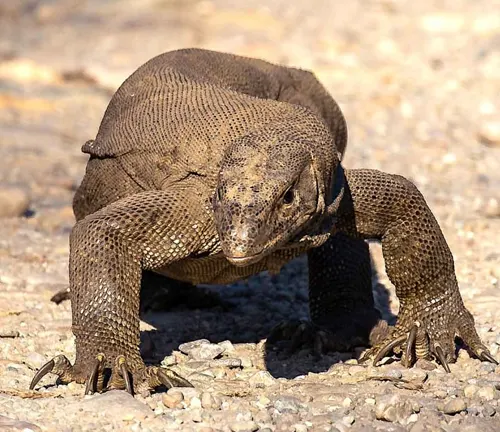
These lizards are primarily solitary creatures, preferring to roam and hunt alone, although they may congregate around abundant food sources or during the mating season. Bengal Monitors are diurnal, meaning they are most active during the day, basking in the sun to regulate their body temperature. Despite their large size, they are agile climbers and can escape predators by fleeing into burrows or climbing trees. In many cultures, Bengal Monitors hold symbolic significance and are often depicted in folklore and mythology. However, they also face threats from habitat destruction, hunting, and the illegal pet trade. Conservation efforts are crucial to protecting these iconic reptiles and ensuring their survival in the wild.
| Specifications | Description |
|---|---|
| Scientific Name | Varanus bengalensis |
| Common Name | Bengal Monitor |
| Size | Up to 175 centimeters in length |
| Weight | Up to 7 kilograms |
| Coloration | Dark-brown scales with occasional lighter markings |
| Habitat | Forests, grasslands, urban areas |
| Distribution | South Asia (India, Bangladesh, Sri Lanka, Nepal, Pakistan) |
| Diet | Insects, small mammals, birds, eggs, carrion |
| Activity | Diurnal (active during the day) |
| Behavior | Solitary, agile climbers, adept hunters |
| Reproduction | Egg-laying, clutches incubated for several months |
| Conservation Status | Least Concern (IUCN Red List) |
| Threats | Habitat destruction, hunting, illegal pet trade |
| Cultural Significance | Revered in mythology and folklore |
The Giant Lizard of South Asia
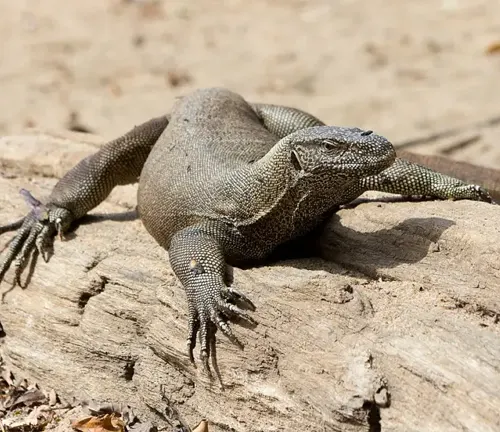
Bengal Monitor, also known as Varanus bengalensis, is a fascinating species of lizard that belongs to the Varanidae family. Native to South Asia, this large reptile has garnered attention for its impressive size, unique characteristics, and significant role in the ecosystem.
Physical Characteristics
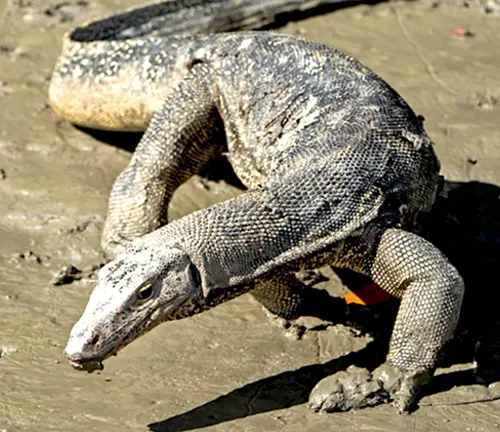
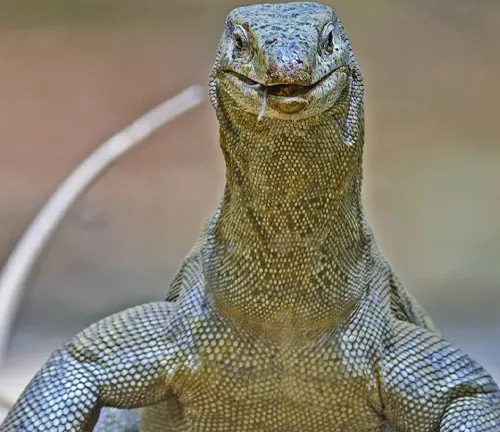
Bengal Monitors are characterized by their impressive size and distinct physical features. These large lizards can reach lengths of up to 175 centimeters (almost 6 feet) and weigh up to 7 kilograms (about 15 pounds). They have long, muscular bodies covered in rough, dark-brown scales, providing them with protection against predators and environmental elements.
Their bodies are streamlined, with strong limbs and a powerful tail that aids in locomotion and balance. Bengal Monitors have sharp claws on their feet, which they use for climbing trees and digging burrows. Their heads are triangular in shape, with a pointed snout and sharp teeth, ideal for capturing and consuming prey.
One of the most notable features of Bengal Monitors is their forked tongues, which they use to detect chemical cues in their environment, helping them locate prey and navigate their surroundings. Their eyes are small and bead-like, providing them with keen vision to spot potential threats or prey from a distance.
In terms of coloration, Bengal Monitors typically have dark-brown scales, although some individuals may exhibit lighter markings or spots scattered across their bodies. These markings can vary in intensity and distribution, providing camouflage in their natural habitats.
Distribution and Habitat
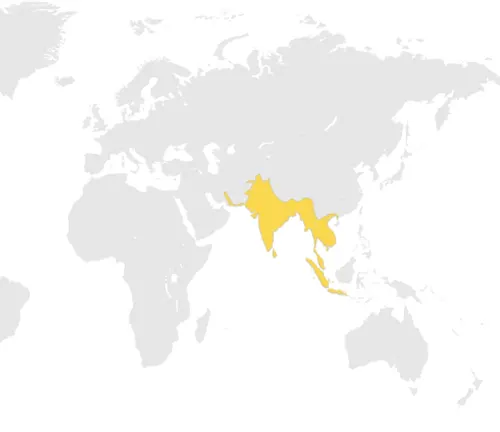

The distribution and habitat of Bengal Monitors are closely intertwined with the diverse ecosystems of South Asia. These reptiles are primarily found in countries such as India, Bangladesh, Sri Lanka, Nepal, and Pakistan, where they inhabit a variety of habitats ranging from forests and grasslands to urban areas.
Bengal Monitors are adaptable creatures, capable of thriving in diverse environments. They can be found in dense tropical forests, where they navigate through the thick undergrowth and climb trees in search of prey. In grasslands and savannas, they patrol open areas, utilizing their keen senses to hunt for insects, small mammals, and other prey.
Additionally, Bengal Monitors are known to inhabit urban areas, where they may take refuge in parks, gardens, and even human dwellings. Despite the encroachment of human development into their habitats, these lizards demonstrate remarkable adaptability, often coexisting alongside human populations.
Their distribution within these habitats can vary based on factors such as food availability, access to water sources, and shelter. Bengal Monitors are known to establish territories and may exhibit seasonal movements in search of food or suitable nesting sites.
Diet and Feeding Habits
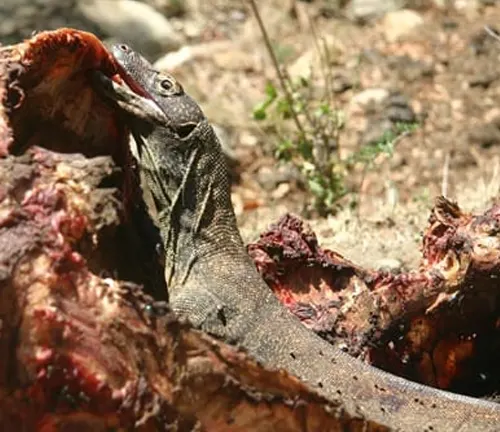

Bengal Monitors are opportunistic carnivores with a diverse diet consisting of various prey items. These impressive lizards are skilled hunters, utilizing their keen senses and agility to capture food both on land and in water. Their diet typically includes:
- Insects: Bengal Monitors feed on a wide range of insects, including beetles, grasshoppers, crickets, and cockroaches. They use their sharp claws and quick reflexes to snatch insects from foliage or the ground.
- Small Mammals: Rodents such as mice, rats, and squirrels are a significant part of the Bengal Monitor’s diet. These lizards are adept at stalking and ambushing mammals in their burrows or while they are foraging for food.
- Birds and Eggs: Bengal Monitors are opportunistic hunters and will prey on birds and their eggs when the opportunity arises. They may climb trees or raid nests to capture eggs or young chicks.
- Carrion: Like many scavengers, Bengal Monitors are not averse to feeding on carrion. They may scavenge on carcasses left behind by other predators or roadkill found along roadsides.
- Fish and Aquatic Prey: Being semi-aquatic, Bengal Monitors also feed on fish, frogs, and other aquatic prey. They are proficient swimmers and may hunt for aquatic prey in rivers, ponds, and marshes.
Behavior and Social Structure


Bengal Monitors are primarily solitary creatures, preferring to roam and hunt alone rather than in groups. However, they may congregate around abundant food sources or during the mating season. Despite their solitary nature, Bengal Monitors may interact with conspecifics (members of the same species) occasionally, especially during encounters over territory or mating opportunities.
In terms of behavior, Bengal Monitors are diurnal, meaning they are most active during the day. They spend much of their time basking in the sun to regulate their body temperature, utilizing rocks, tree branches, or other elevated surfaces as basking spots. This behavior helps them maintain optimal body temperature for digestion and overall physiological function.
Bengal Monitors are agile climbers and adept hunters, utilizing their keen senses of sight, smell, and hearing to locate prey. They are opportunistic carnivores, meaning they will consume a wide variety of prey items, including insects, small mammals, birds, eggs, and carrion. Their hunting strategies may vary depending on the type of prey and the habitat in which they are hunting.
When threatened, Bengal Monitors may exhibit defensive behaviors such as hissing, puffing up their bodies, or lashing their tails. However, they are generally shy and will attempt to flee from potential threats rather than engage in confrontation.
Reproduction and Lifecycle


Reproduction in Bengal Monitors typically occurs during the monsoon season when food is plentiful and environmental conditions are favorable. Mating behavior begins with male monitors engaging in territorial displays to attract females and establish dominance. These displays often involve head bobbing, posturing, and vocalizations to assert dominance and court potential mates.
Once a male successfully attracts a female, mating occurs, usually through internal fertilization. After mating, the female Bengal Monitor will search for a suitable nesting site to lay her eggs. She may dig a shallow nest in sandy soil or use existing burrows to deposit her clutch of eggs.
The size of the clutch can vary depending on factors such as the age and size of the female, as well as environmental conditions. Clutches typically contain anywhere from 10 to 30 eggs, although larger clutches have been reported in some cases.
Once the eggs are laid, the female covers them with soil or vegetation to protect them from predators and regulate temperature and humidity levels. The incubation period for Bengal Monitor eggs can last several months, with hatchlings emerging from the eggs when they are fully developed.
Conservation Status
The conservation status of Bengal Monitors is currently assessed as “Least Concern” on the IUCN Red List of Threatened Species. This designation indicates that the species is not facing immediate threats to its survival on a global scale. However, local populations may be at risk due to habitat loss, hunting, and the illegal pet trade in some areas.
Despite being relatively widespread throughout its range in South Asia, Bengal Monitors face various threats to their populations. Habitat destruction and fragmentation due to deforestation, urbanization, and agricultural expansion are significant concerns. Loss of suitable habitat reduces the availability of resources and disrupts breeding and foraging habitats for these lizards.
Additionally, Bengal Monitors are sometimes targeted by hunters for their meat, skin, and body parts, which are used in traditional medicine and cultural practices. The illegal pet trade also poses a threat, as these lizards are sometimes captured from the wild and sold as exotic pets, leading to population declines in some regions.
Interactions with Humans
Interactions between Bengal Monitors and humans can vary depending on factors such as habitat overlap, human activities, and cultural perceptions. While Bengal Monitors generally prefer to avoid human contact, encounters between the two species do occur, sometimes leading to conflicts or misunderstandings.
In urban areas, Bengal Monitors may take refuge in parks, gardens, and residential areas, where they can encounter humans more frequently. These encounters may result in negative perceptions, as some people may view the lizards as pests or threats to pets and livestock. Additionally, Bengal Monitors may raid poultry farms or garbage bins in search of food, leading to conflicts with human residents.
In rural areas, Bengal Monitors may be perceived more positively, especially in agricultural settings where they help control pest populations by feeding on rodents and insects. However, conflicts can still arise when monitors prey on poultry or disturb livestock.
Bengal Monitors are also sometimes kept as pets, although their large size and specific care requirements make them challenging to care for properly. Capturing monitors from the wild for the pet trade can also have detrimental effects on wild populations, leading to declines in some areas.
Different Species
Water Monitor
(Varanus salvator)
Also known as the Asian water monitor, this species is one of the largest monitor lizards and is found throughout South and Southeast Asia, including India, Bangladesh, Sri Lanka, Thailand, and Indonesia. Water monitors are semi-aquatic and often inhabit coastal areas, rivers, and mangrove swamps.
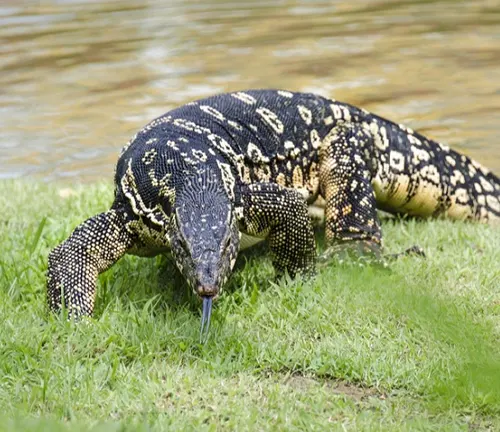

Clouded Monitor
(Varanus nebulosus)
Found in Southeast Asia, including parts of Thailand, Malaysia, and Indonesia, the clouded monitor is known for its distinct pattern of cloud-like markings on its body. It inhabits forests and is primarily arboreal, spending much of its time in trees.
Yellow Monitor
(Varanus flavescens)
This species is native to Indonesia, particularly on the islands of Java and Bali. It is characterized by its yellowish-brown coloration and inhabits forested areas. The yellow monitor is relatively small compared to other monitor species.


Dumeril’s Monitor
(Varanus dumerilii)
Native to the islands of Java and Sumatra in Indonesia, Dumeril’s monitor is a medium-sized species known for its striking black and yellow coloration. It primarily inhabits forests and is often found near water sources.
Spotted Tree Monitor
(Varanus scalaris)
Endemic to the island of New Guinea, including parts of Papua New Guinea and Indonesia, the spotted tree monitor is a small to medium-sized species that primarily inhabits tropical rainforests. It is known for its spotted pattern and arboreal lifestyle.
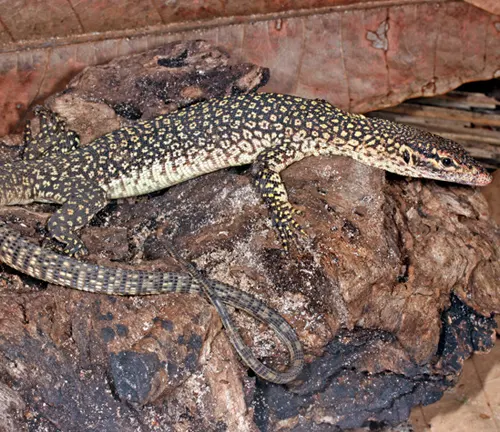
Frequently Asked Questions (FAQs)
- What do Bengal Monitors eat in the wild?
Bengal Monitors are opportunistic carnivores, feeding on a variety of prey including insects, small mammals, birds, eggs, and carrion. - How big do Bengal Monitors grow?
Bengal Monitors can reach lengths of up to 175 centimeters (almost 6 feet) and weigh up to 7 kilograms (about 15 pounds). - Where can Bengal Monitors be found in the wild?
Bengal Monitors are native to South Asia, including countries like India, Bangladesh, Sri Lanka, Nepal, and Pakistan. They inhabit diverse ecosystems such as forests, grasslands, and urban areas. - Do Bengal Monitors make good pets?
Bengal Monitors require specialized care and large enclosures due to their size and specific habitat needs. They are not recommended for beginner reptile keepers. - How do Bengal Monitors reproduce?
Female Bengal Monitors lay clutches of eggs in shallow nests dug into the ground. The eggs are then incubated for several months before hatching. - Are Bengal Monitors endangered?
Bengal Monitors are currently listed as a species of “Least Concern” on the IUCN Red List. However, they face threats from habitat destruction, hunting, and the illegal pet trade. - Do Bengal Monitors hibernate?
Bengal Monitors do not hibernate but may become less active during cooler months. They rely on basking in the sun to regulate their body temperature. - Can Bengal Monitors swim?
Yes, Bengal Monitors are proficient swimmers and are often found near water sources. They are semi-aquatic and may dive underwater to catch prey or escape predators. - How can you identify a Bengal Monitor?
Bengal Monitors have long, muscular bodies covered in rough, dark-brown scales. They may have lighter markings or spots scattered across their bodies. - Are Bengal Monitors legal to keep as pets?
Laws regarding the keeping of Bengal Monitors as pets vary by region. It’s essential to check local regulations and ensure proper permits are obtained if required. - Do Bengal Monitors interact with other animals?
Bengal Monitors are primarily solitary creatures but may interact with other animals, particularly during feeding or mating interactions. They may also compete with other predators for resources in their environment.



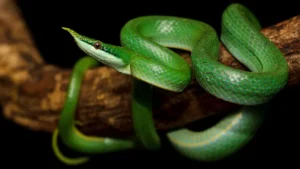
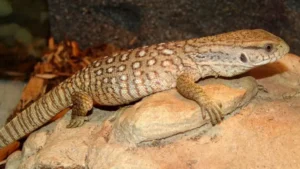
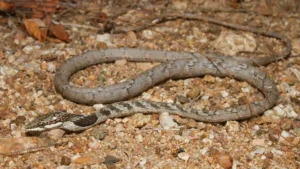
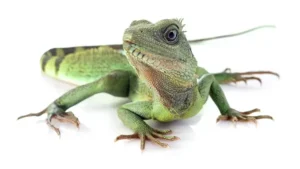





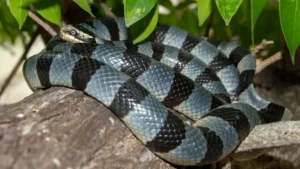
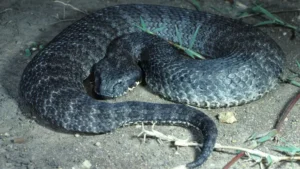
Leave your comment